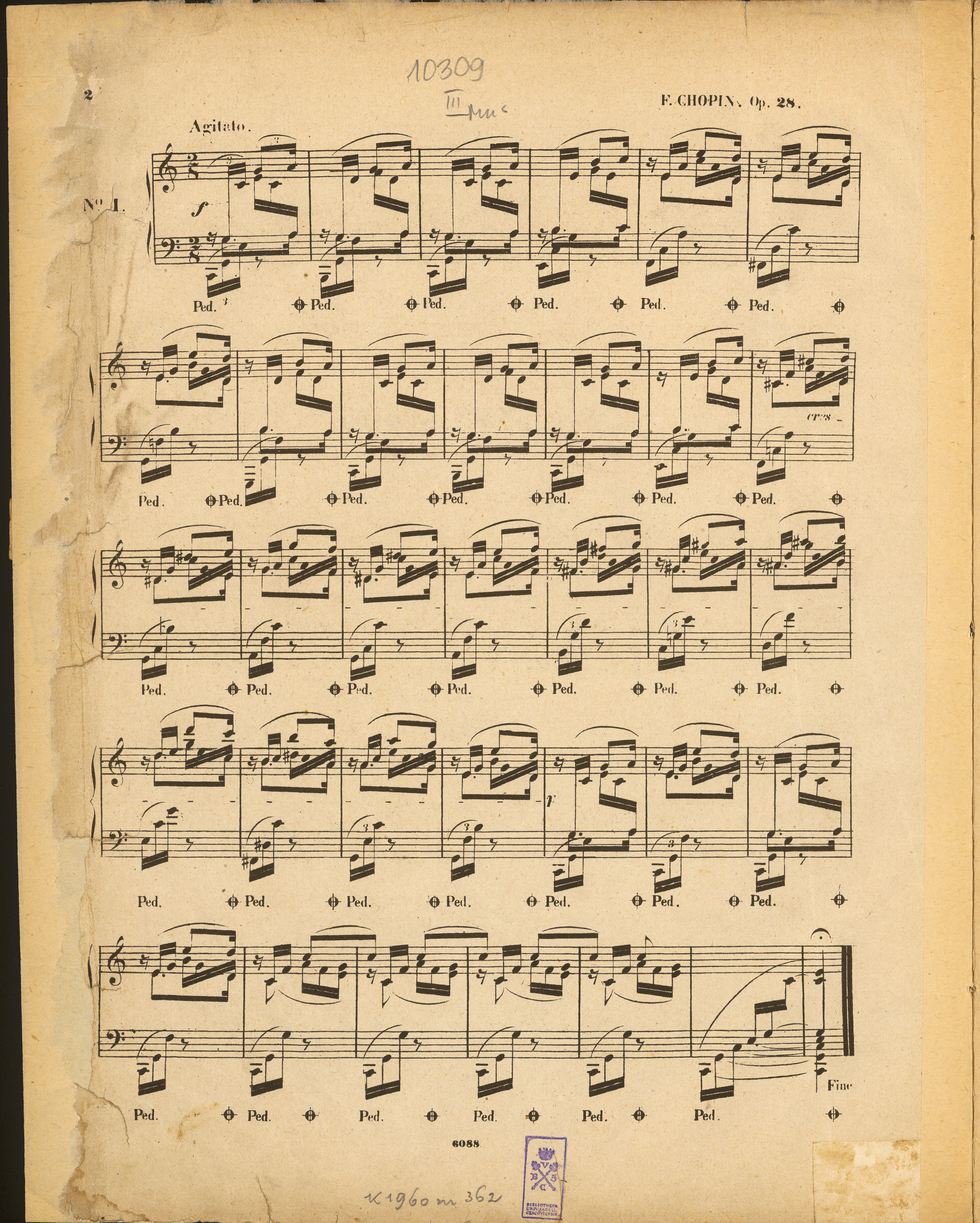



The authentic rhythm in b. 18-20, 23 and 25-26 – featuring quintuplets in the R.H. part – may be regarded as an example of a written-out rubato: a performance ploy admired in the play of Chopin himself, but often considered impossible to reproduce correctly. Therefore, the publisher of GE2 could have coordinated the rhythm in these bars with the remaining ones to avoid an excessive rhythmic complication already in the first piece of the cycle, fearing scaring off potential customers. The deletions of semiquaver rests visible in A in b. 18-20 show that Chopin most probably introduced the rhythmic variations in these bars – and perhaps also in the next ones – only just at the stage of writing A, hence at the last stage of working out the details of the composition.
Compare the passage in the sources »
category imprint: Differences between sources; Corrections & alterations; Source & stylistic information
issues: Corrections in A, GE revisions, Deletions in A
notation: Rhythm


